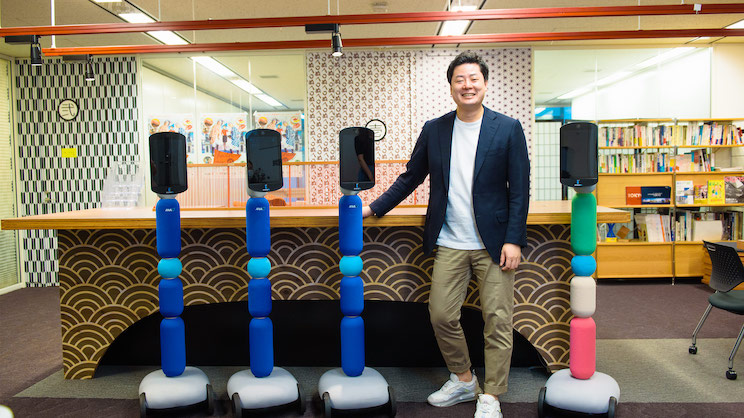Open-space office as an intersection of interaction. Konel, a multi-cultural creator collective and a fountain of creativity.
Open-space office as an intersection of interaction. Konel, a multi-cultural creator collective and a fountain of creativity.

The office building of “Konel,” a creator collective, is located in the town of Nihonbashi Bakuro-cho, home to many wholesale stores. They relocated their offices here in 2016. As to why they located their hub within this historical town and their future... Producer and Co-Founder, Mr. Mitsuyo Demura, Technical Director, Mr. Yasuhiro Ogino, and Creative Technologist Mr. Kenji Jonse told us the story.
From the Consulting field to the Creative industry.
What they look for in “right-brain work” of the creative process.
-Here at Konel, in general, what kind of projects do you take part in?
Demura: Konel is a company focusing on Design and Technology founded in 2011. We take part in the creative process behind many different genres including art, commercial products, and advertising. We do not limit ourselves.
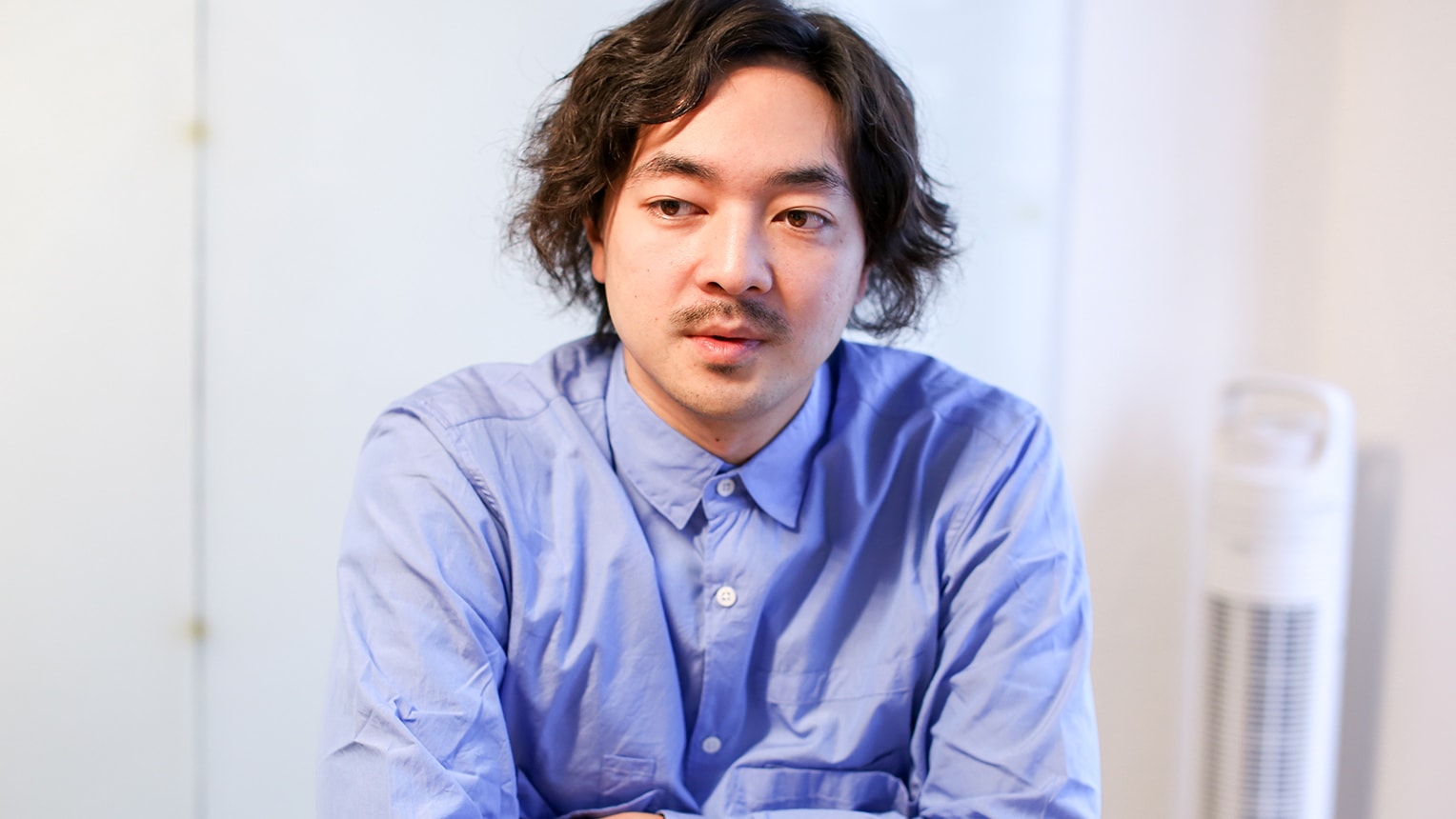
Ogino: Our work is centered on two aspects. One is client-based, and the other is our own individual projects. Both are for the creation of never-before-seen experiences. In our client-based works, we took part in projects such as producing the “Amazon BAR,” Amazon’s first-ever restaurant store, and developing the “AI Kabira-kun” an AI robot to promote the World Cup. In addition, for one of our own projects, we recently collaborated in developing the “NO-ON” machine that auto-creates songs by utilizing human brain waves with creators in-house and outside, and exhibited at the MUTEK JP2018, a festival of music and technology.
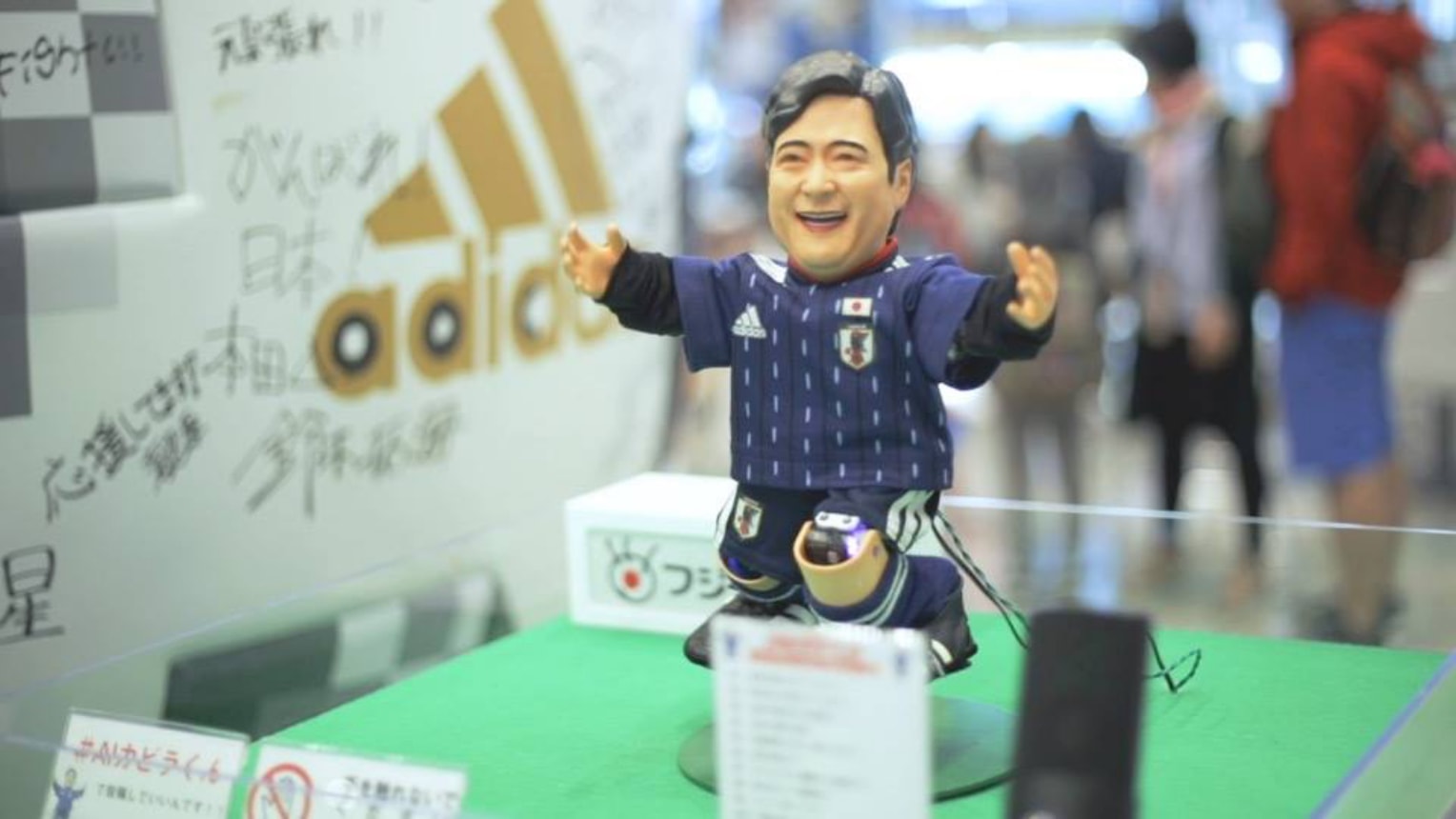
AI Kabira-kun: an AI that helps answering questions and offers soccer game prediction
Demura: “Amazon BAR” was a project to open a bar to showcase Amazon’s world’s largest selection of about 140,000 types of alcoholic beverages to as many people as possible. The bar opened in Ginza for a limited 10-day period. We handled the overall production work along with advertising and production companies. At the bar you can experience a never-before-seen service where if you answer questions via a touch panel, it recommends the alcoholic drink that best matches your mood. We also placed emphasis in having an expansive interior and were successful in creating media buzz.
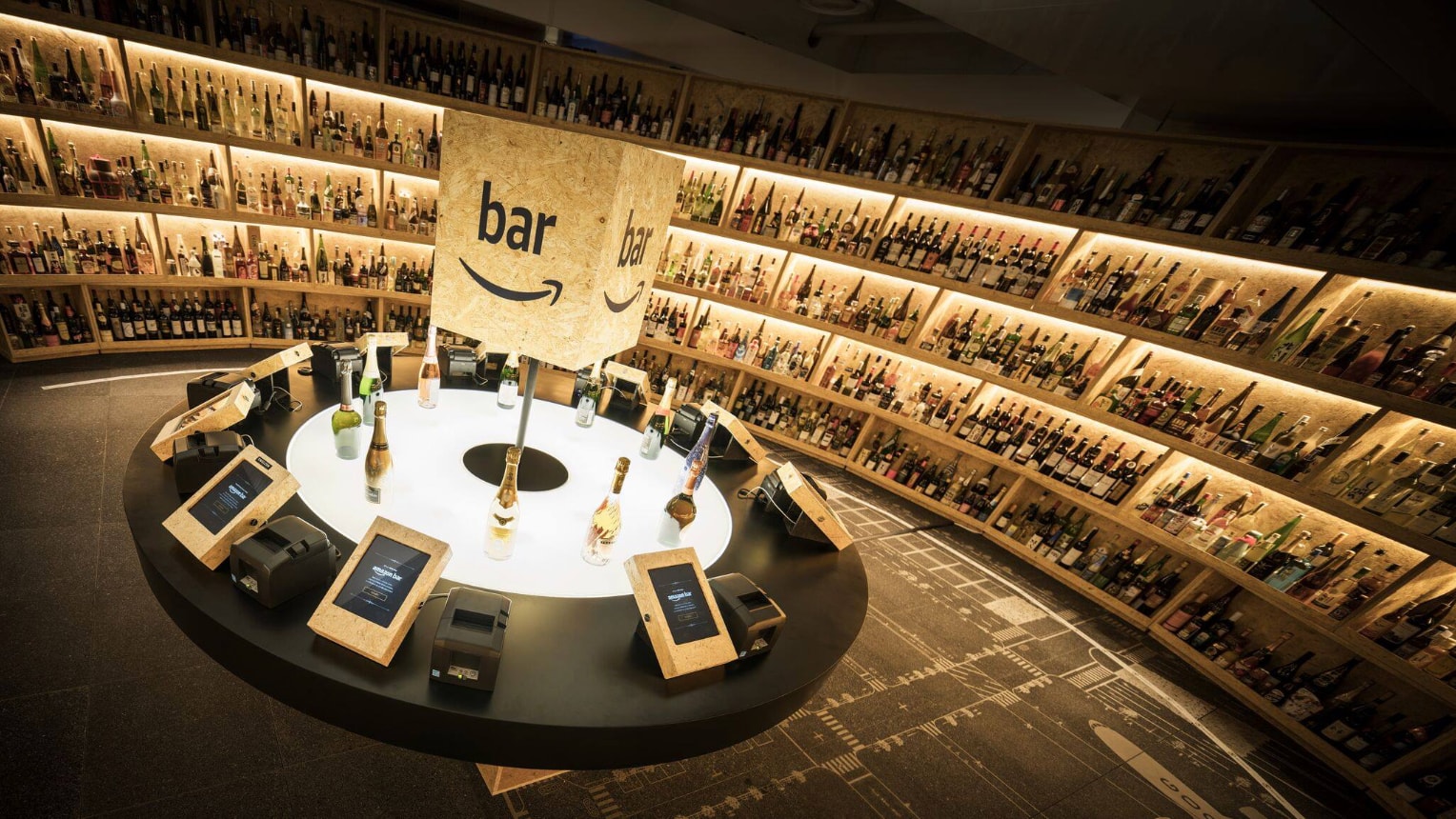
The “Amazon BAR,” an environment highlighting and showcasing the vast alcoholic beverage selection of Amazon.
-You’re involved in so many creative projects. How did you end up establishing Konel?
Demura: When we founded Konel in 2011, I was still working at the consulting firm called Accenture. While I was there I was mostly working in projects that involved what I call “left-brain” thinking. It required logical thinking to organize large-scale projects such as postal administration, defense and broadcasting. Due in part to a reaction towards this, I wanted to take part in work that involved “right-brain” thinking.
When I look back, I’ve always enjoyed creating something from scratch. I was even involved in the Invention Club as afterschool program when I was in elementary school. That memory just came back really strong during this time and I wanted to shift towards work that involved the full capacity of my right brain. So I called up Ogino, a freelance WEB creator and my former bandmate from my university days, and Miyata, a visual arts creator who held music events since our university days. We started this company while we still kept our jobs at the time.
-So everyone here still had their day job in the beginning. When was the transition to full-time on this?
Demura: I was actually planning to leave Accenture and work full-time at Konel soon after foundation, but during that time I started to think that in order to change the world in dynamic fashion, I required an overall understanding of the structure of the creative industry. I needed to build up my network to improve growth.
That’s how I got a full-time job at Tokyu Agency, an advertisement firm, while still working part time at Konel. It was here where I gained industry experience while I took part in various projects as a producer. Later in 2016, I finally made a transition to full-time at Konel.
Comrades found through a chance encounter.
Towards a flexible organization accepting of various cultures and the way of work.
-One of the traits of Konel is the cultural variety of its members.
Ogino: We have quite a diversity here at Konel’s; Japanese, American, Vietnamese, Korean, Taiwanese, German, etc. We’re also pretty diverse job-wise. We have designers, engineers, copywriters, planners, directors, producers, etc.
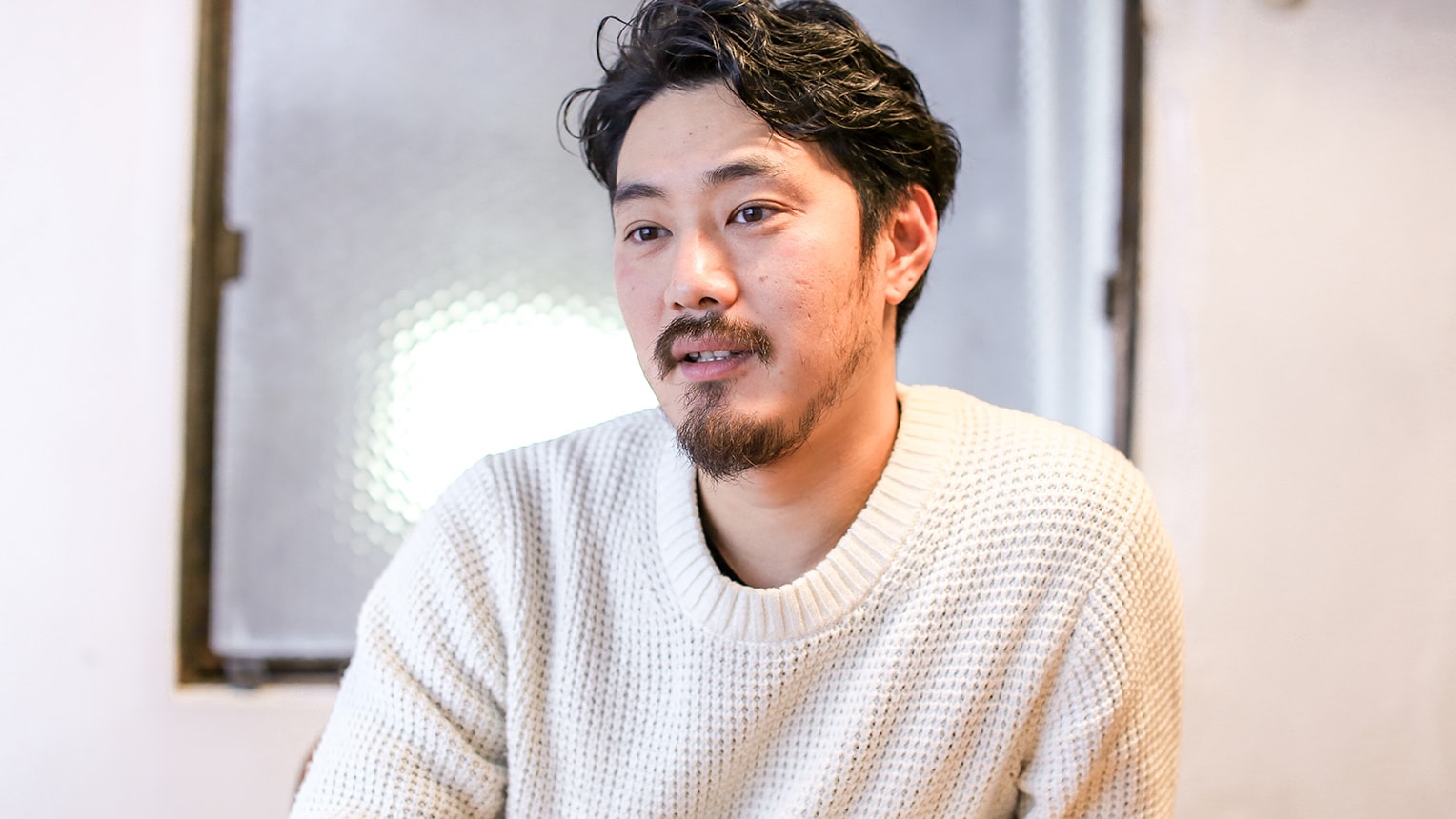
Jones: I used to live in the States attending art college while customizing cars and creating original products. Currently as a Creative Technologist at Konel, I work in fusing the digital with the analog, such as 3D modeling, laser printing, welding, etc.
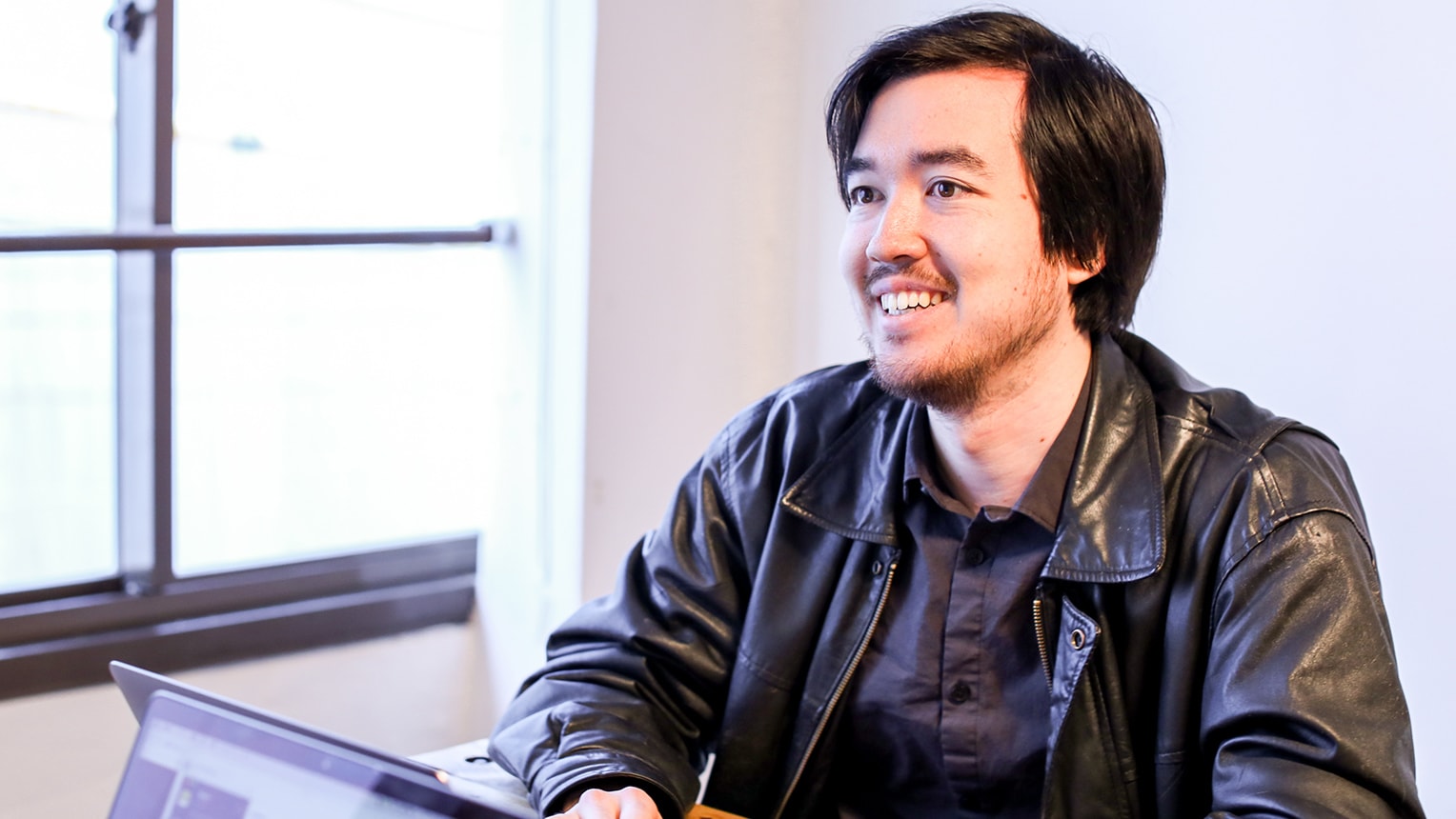
Demura: Thanks to Jones our area of expertise in hardware much expanded. This is something a graphic and WEB creator cannot do.
Jones: When I first arrived in Japan I was looking for bandmates through the internet. By chance I saw an ad looking for members at the “Bakuro-Cho FACTORY,” a gallery operated by Konel. I got hooked and contacted them, and when they showed interest in my activities and creations, I ended up joining Konel as a Technologist.
-So you went looking for a band but found a job instead (laughs). These chance encounters somehow seems to be connected with how this collective is organized.
Ogino: I agree. Not only is Konel multi-cultural, but so is the way we work. You can work full-time, freelance, internships, or as a side hustle with another full-time job. All our members work in various ways in the method they prefer.
Demura: One very memorable encounter was with a member who joined us as a part-timer while working full time at Yahoo Japan. When Konel placed recruiting ads, by coincidence, the creative team he was involved had the similar name “coneru.” He took a liking to that and after contacting us, we immediately got along so he joined us.
-How does he handle his two jobs?
Demura: He has a wide and expansive sets of skills including planning, design, direction, etc. Depending on the project, he might take part in our projects, or conversely, he might bring in a project to work together with the Konel team.
Ogino: We have many members who have jobs at major companies and work here as freelancers. The disadvantage of working that way is that your resource becomes limited. So it turns out, even if you have the necessary skills, it’s really difficult to handle and be part of large-scale projects. I think he finds value in Konel as a resource.
Demura: At Konel, various freelance members bring in work opportunities. Our relation with our members is not that of a employer and employee. We think it’s only fair that everyone can utilize Konel as a platform and environment in creating high-quality collaborations.
The secret to organizing a team overflowing with creativity?
Twice a week catering!
-Organizing people from varied cultures and work ethics seems pretty difficult.
Demura: That’s true. To be honest, that was a tough point. And in order to find a way out of this issue, one day we decided to establish the Vision. In the beginning, it was only friends that came together to establish Konel so there was no need to clarify our vision. It was mutual. But with the addition of more and more members like Jones, it really became necessary to articulate our vision. Both in Japanese and in English.
Ogino: That’s when we came up with our slogan. It’s “Shaping Desire.” We only want to continue providing things that we really desire. Both in client-based works and in our own projects as well. This slogan clarified our values and standards to stop outputting work without honest discussion.
Hence, although we do have conflicting opinions on and off, I feel that we’ve started to move away from one-off projects and have now been focusing more and more on long-term projects.
-Are there any daily routines to build communication among your team?
Demura: We have lunch together every Monday “the Rice Day” and Thursday “the Bread Day”, and everyone eats together. On Monday we make our own rice at the office, and I make sure to make at least one side dish. Since it’s on Monday, I make sure to begin preparing on Sunday. Of course, this is completely of my own convenience (laughs).
-Make time for a meal to have communication, that’s a fantastic idea.
Demura: Thanks. We all think that casual conversation is imperative in creating something new. Everybody here loves creating and if we don’t keep tabs, we all have a habit of concentrating too hard on our own work. And if that’s all you do, then your own creativity becomes your limitations. I think it’s necessary to make more time to have simple and casual conversation about nothing in particular.
Ogino: Although there are many difficult issues when building an ideal team, the daily trial and error involved in the process to designing a productive and creative team is fun.
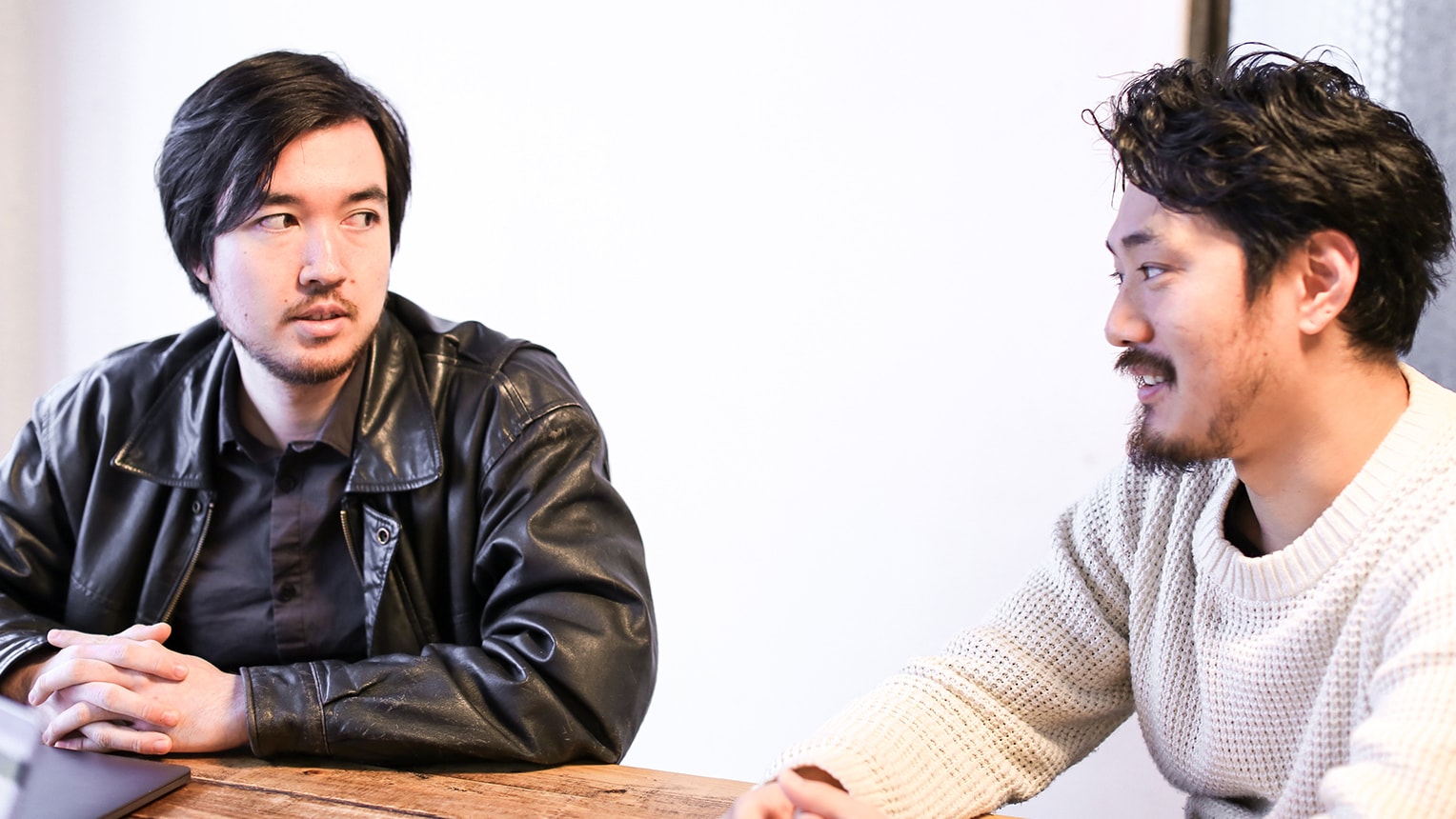
Creating unexpected collaborations by utilizing the office as an intersection of interaction.
-With the advent of share offices and the freedom to work anywhere, why did Konel decide to have an office?
Demura: One big reason was that having a location makes it easier to build tangible objects. When we recently developed and announced the “NO-ON,” the interactive artwork that creates songs utilizing brain waves, since the contraption takes up 3㎥ worth of space, I don’t think it could have been possible without a workshop space.
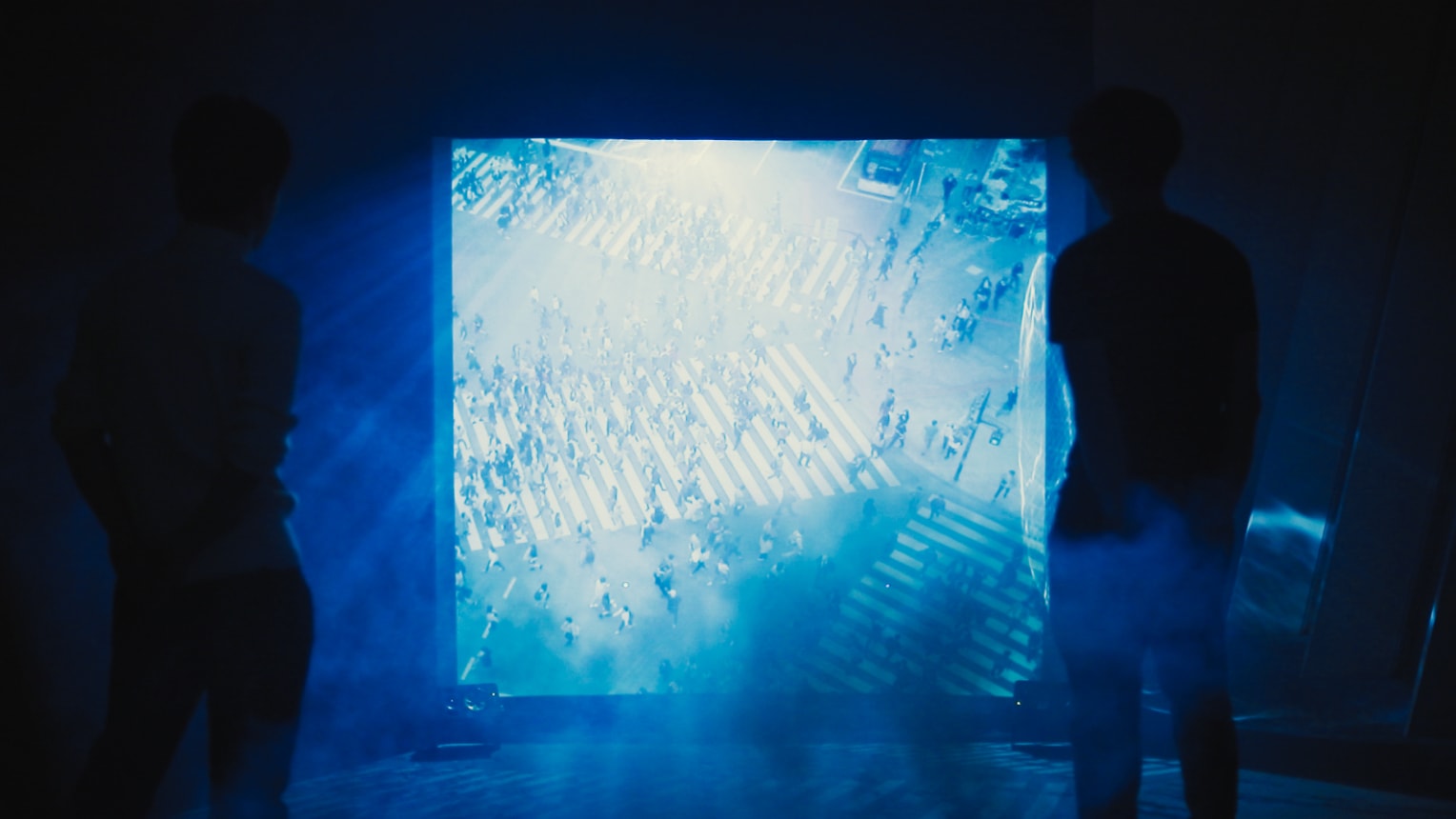
“NO-ON” composes music using your brain wave
Jones: The sole reason I can focus on my artwork IS because I have a location I am free to use. Of course, I have been bugging them for an even larger space (laughs).
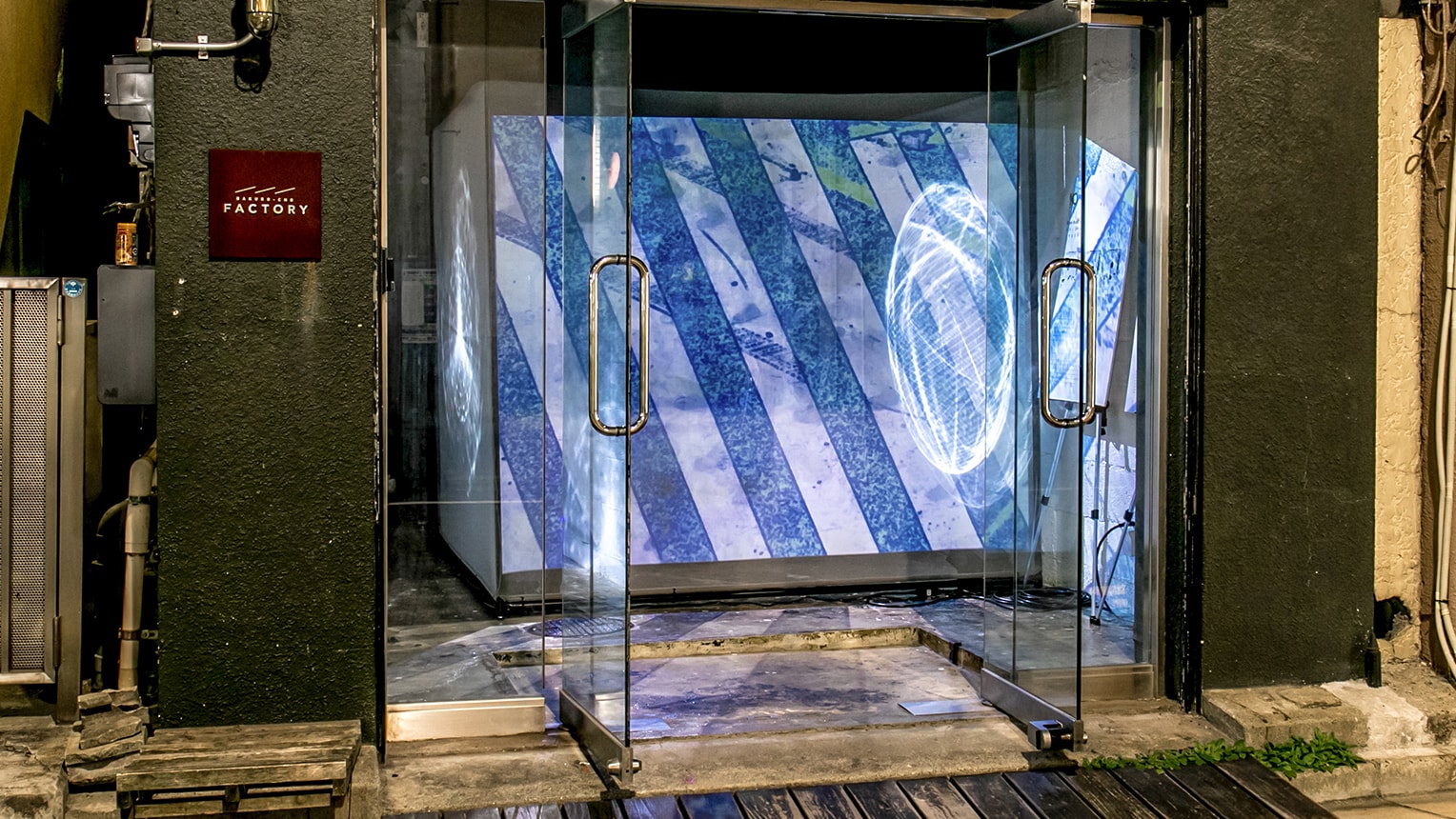
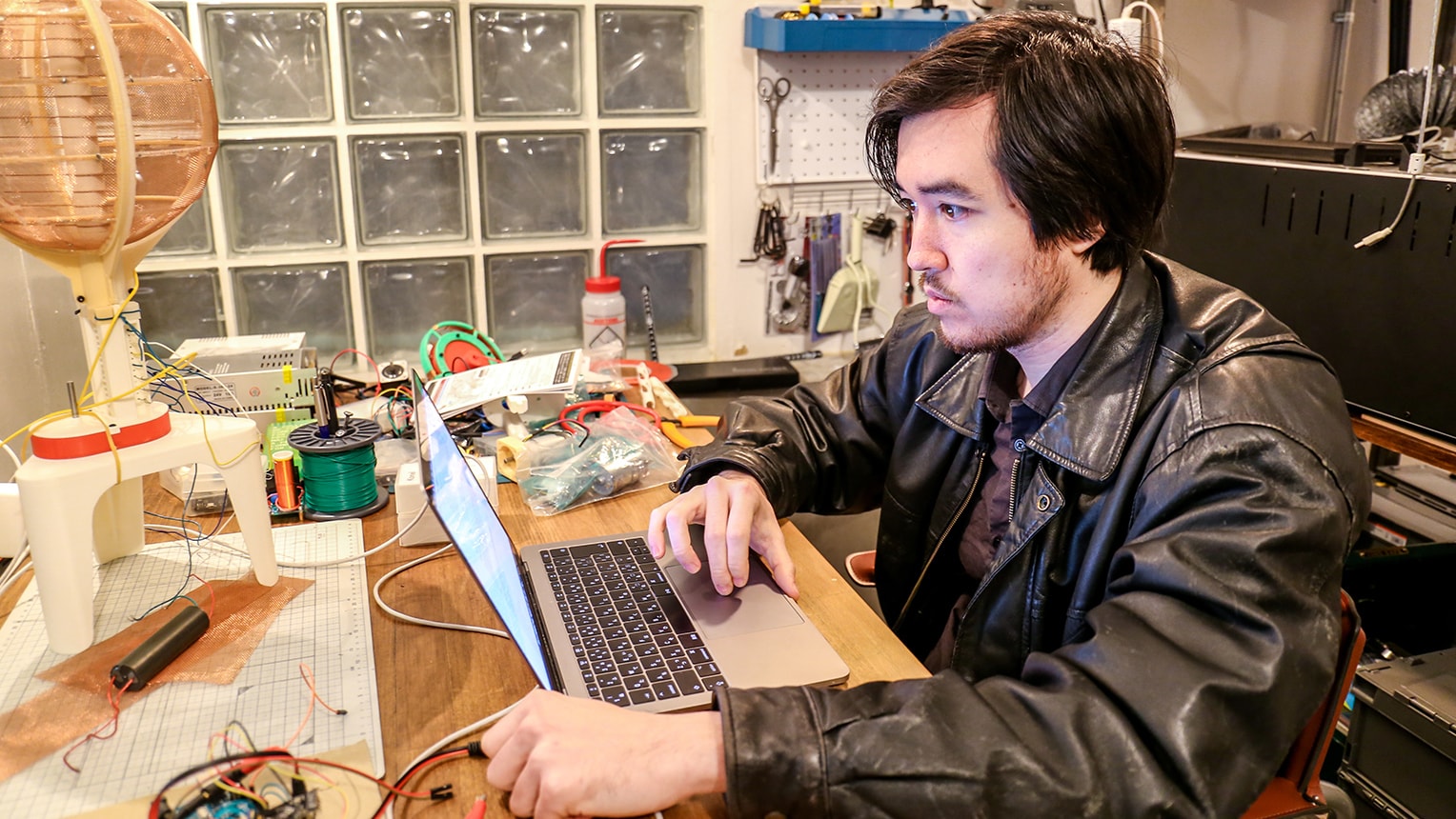
Demura: I believe that having a shared environment makes it easier for person-to-person interaction and collaboration. At Konel we use the office as a co-working space for various creators.
Previously a planner from an advertising firm brought in a request to build a certain type of AI robot. Although it was a very difficult project and we were unsure whether or not we could do it, when we discussed this with an engineer from San Francisco that just happened to be at the office, we found out that it was possible! And that is how the aforementioned “AI Kabira-kun” was made.
Ogino: Since our office itself has become like an intersection of different and various types of people, it makes for a great environment for various collaborations and unexpected events.
Choosing a location in 15 minutes after one viewing. The reason behind creativity in a lived-in town.
-And this “environment” is this 3-story building?
Demura: That’s correct. When we began looking for a location, this building was the first and only place we went for a viewing and made the decision immediately. We had no plans on making a decision that day, but after Ogino and I walked around the neighborhood for 15 minutes, we told the landlord that we’ll take it.
Ogino: When we took a stroll around here, we noticed that there were many creative companies, specialized wholesalers and galleries in the area. Near the river were many local watering holes with the perfect amount of a lived-in feeling. You could literally feel the history and culture throughout the area, and the atmosphere was rife with excitement and comfort to stir up creativity.
Demura: Beforehand, we were based at a share-office in Ebisu. The western part of Tokyo is full of cutting-edge information, and is definitely a pretty unique and strange area compared to the rest of Japan. But we started to feel that if we didn’t venture out from such an area, our sense of “Ordinariness” might become dull.
In the communication industry, having a sense of “Ordinariness” is extremely important. If you lose that, a project will then become just an ego-trip of the planner. But here in Bakuro-cho, the town has a normal, lived-in sense of feel. I feel this is the perfect place for creative work.
Ogino: You can see school children going home at 4 o’clock, and by 6, you’ll notice the smell of dinner. Because this town has this lived-in feel, we believe we can put more reality into our projects and productions.
Jones: If you actually start working here, you’ll definitely feel this is the perfect place for product-based creativity. Being close to Akihabara is a definite plus too. If you’re out of parts, you can just run to Akihabara. This area is also home to many electronics start-up enterprises, making for a pretty exciting and thrilling environment.
The joy in studying issues through understanding a town.
The desire to resolving issues through creative ideas.
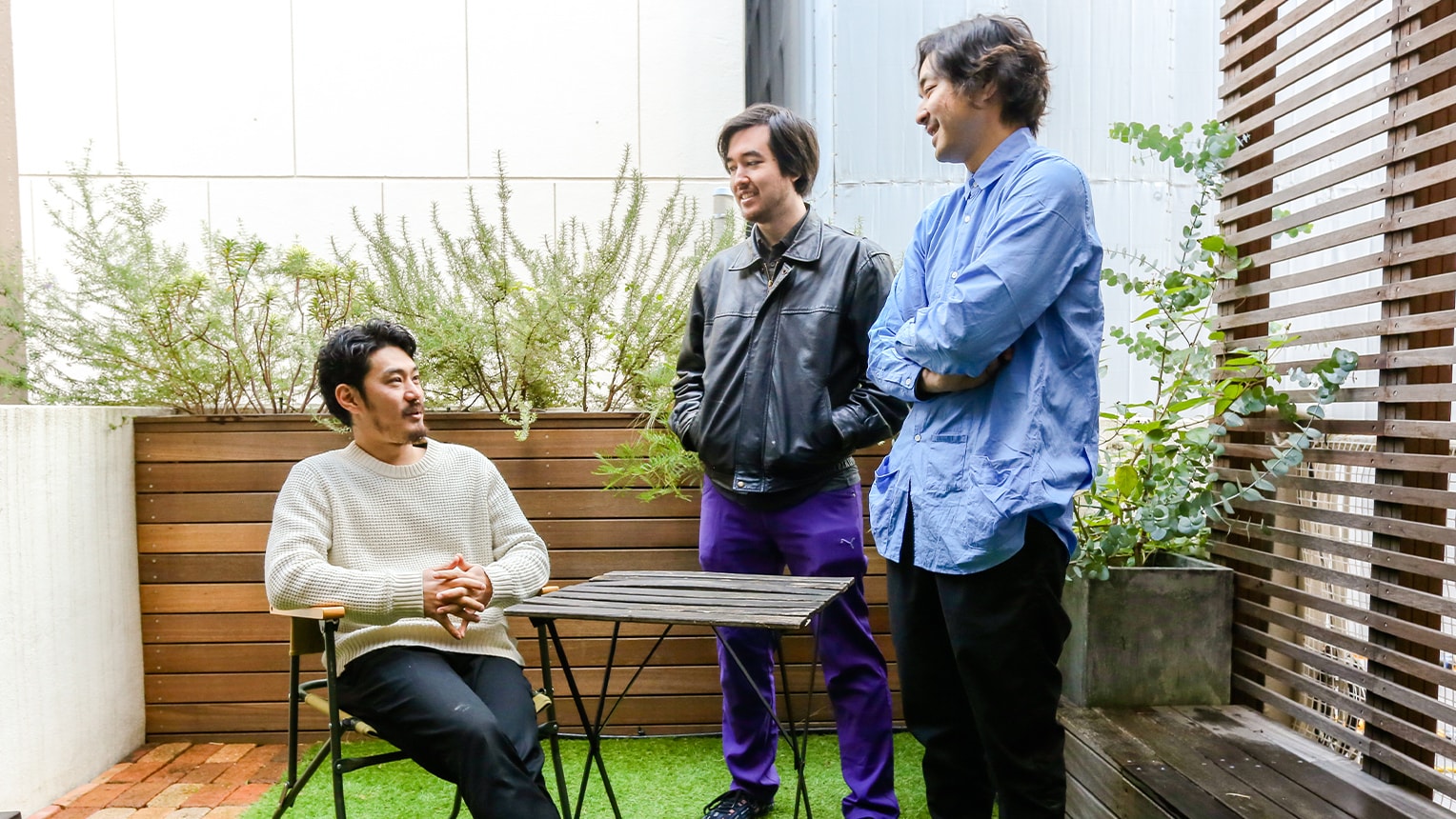
-Are there any interactions with the townspeople?
Demura: We are always saying that we want to take part in the revitalization project of this town, and through these discussions we’ve been blessed with work and new projects.
-For example? How did it lead to work?
Demura: We became acquainted with the owner of a hotel that was being renovated in Bakuro-cho. When the hotel was scheduled for a full-renovation, we took part in the branding process such as site production and system design. The hotel owner even affectionately calls us their “neighbor.” We were fortunate enough to be involved in a great collaborative relationship. Not like a normal relationship based on business.
-From a creator’s point of view, are there any ideas you want to realize in revitalizing the town of Bakuro-cho?
Demura: I think we can do something with the Kandagawa river that flows next to our office. When we designed our work ethic, how we commuted was also an important aspect. We think making our commutes more comfortable and finding new exciting materials will immediately raise productivity. For example, we all want to have more ways to commute. In Nihonbashi there are numerous ship docking areas so commuting by boat or even jet skis may be a possibility.
Jones: There might come a day when jet ski licenses suddenly start sky-rocketing around Bakuro-cho (laughs).
Ogino: Oh, and the town is not hilly so commuting by bicycle should be more prevalent, but there are so few parking spaces. Some places may be too small for a car, but could be a great parking space for bicycles. As a form of mobility, I think that bicycles can offer more creative ideas.
Demura: There is fun in looking at issues with the town in mind, not to mention so many ideas for solutions. We definitely want to continue having a proactive relationship with the region.
Interview: Aya Sakamoto and Daisuke Sasaki / Article: Ichiro Yasui / Photographs: Tatsuya Sato
Konel
Raising their slogan of “Shaping Desire,” this multi-cultural creator collective utilizes their skills in design and technology to take part in the production activities in various fields of artistry, advertisement, and product development, etc


